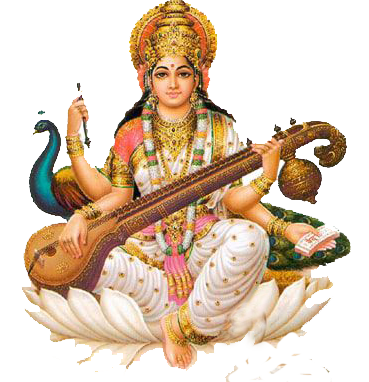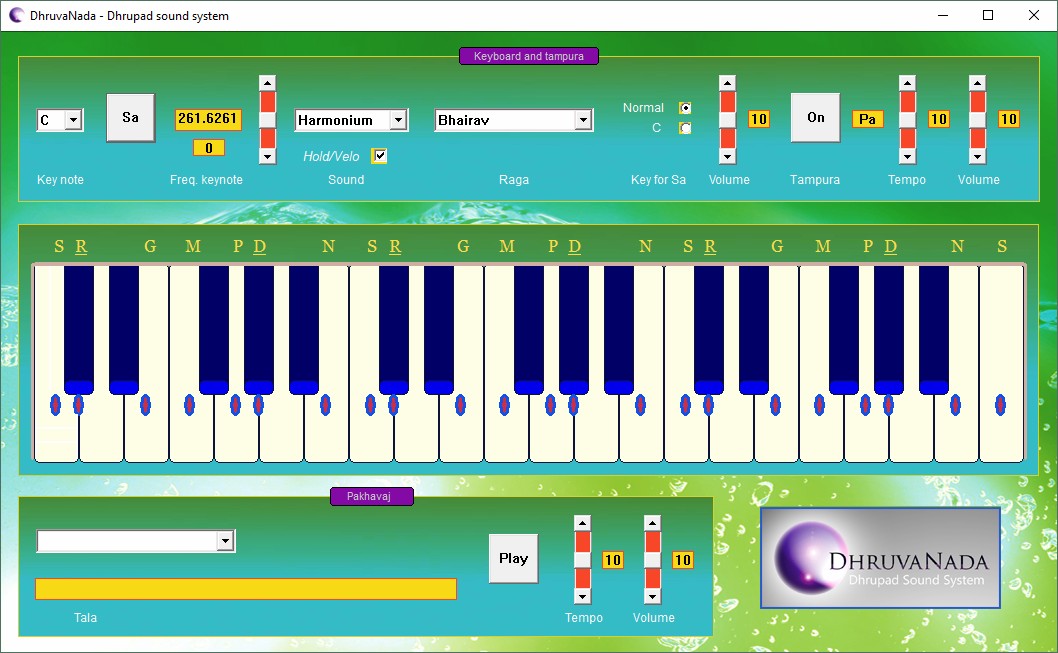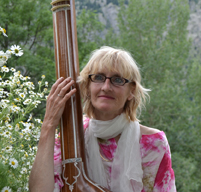
Creator:
Ketil Helmersberg
Shivala Florence Morfoisse and
Ramakant Gundecha

THE DHRUVANADA SOUND SYSTEM
With the DhruvaNada sound system you can play many of the most popular traditional scales, or ragas, of Indian classical music in their original form with the correct intervals between the notes. In addition, the program has a full-fledged tampura and pakhavaj with all the most common classical Indian talas, or rhythm patterns, included. The program contains for now 40 ragas.
The scales of the ragas have with painstaking accuracy been defined by some of India's and Europe's foremost experts on Dhrupad, a work that went on for many years by the late Ramakant Gundecha and Shivala Florence Morfoisse.
Dhrupad is not only the oldest Indian science of classical music, but also the tradition that most faithfully and assiduously has kept the knowledge of the original natural scales of the ragas. These scales, although commonly used, have in modern time been highly distorted because of the influence of Western instruments like the harmonium and electronic keyboard. The Dhrupad tradition has always strongly emphasized the correct tuning of the scales.
The purpose of the DhruvaNada Sound System is both to revive and safeguard the original age old classical Indian scales. The intervals between the notes of a Western fixed pitched instrument, like the piano or the harmonium, is based on a tonal system that is called equal temperament, which means that all the intervals between the notes are equalized. This is artificial and in contrast to traditional natural scales of the world, to which the Indian scales belong. Unlike the equal temperament, the natural scales are based on the natural harmonic series.
By the revival of these Indian scales, or ragas, we aim at restoring the original purity of Indian classical music and thereby also regain its real power and beauty to positively influence the mind and emotions of the performers and the listeners.
RAMAKANT GUNDECHA
Ramakant Gundecha was a member of the renowned Dhrupad music group Gundecha Brothers and was recognized as one of India's foremost experts on Dhrupad scales, or ragas.
Ramakant and his brother Umakant were students of the famous veena player Ustad Zia Mohiuddin Dagar and his brother, the singer Zia Fariduddin Dagar, who were the 19th generation of the renowned Dagar family of Dhrupad musicians.
SHIVALA MORFOISSE
Shivala Florence Morfoisse is a professional Dhrupad singer and teacher who holds a master's degree in music from the university of Paris. She was one of the first long term students of Ramakant Gundecha and his brother Umakant Gundecha.

HISTORY OF DHRUVANDA
After having worked as a professional musician in a classical orchestra for three years, Shivala strongly felt that equal temperament - which has been in common use since the mid-19th century - had made Western music take a bad turn. She therefore started to study a modernized form of indian classical music called Keyal. See: Indian music and piano - the impossible marriage!
After three years of study, she was still not satisfied, much because the teacher was using harmonium, which is an equal tempered instrument introduced in India by the Portuguese. She then met an expert in ethnic music scales who told her that if she wanted to learn the "real thing", she should find a Dhrupad teacher, as Dhrupad was a music tradition in India that most scrupulously had kept the original tuning of the classical Indian music scales, and that this tuning was very different from equal temperament.
She went to India and started studying Dhrupad with Ramakant and Umakant Gundecha. By direct experience she right away knew that she had found what she had been looking for: a music in tune that is able to convey the real spiritual value of music.
Because of the prevalent use of equal tempered instruments in India and the subsequent weakening of oral traditions like Dhrupad, Shivala came to realize that this knowledge of music scales or ragas, which she had found so valuable, was in danger of becoming lost. She became very concerned about finding a way to safeguard the right tuning of the scales for the future and to make it available to the world.
She then met Ketil Helmersberg, a former programmer who also had studied music, and they started a dialogue about Dhrupad and music scales. Inspired by this, he did some research on the mathematics of natural scales and invented a computer program to register the Dhrupad scales digitally as correct ratios. He also created DhruvaNada to make the scales available to the public.
FEATURES AND FUNCTIONS
Dhruvanada can be used with the mouse, the PC keyboard or a midi keyboard. By using the mouse or a midi keyboard, you can also slide between the notes, which is an essential feature of classical Indian music.
You can play in any common key, but which also can be tuned, and you can regulate the speed both of the tampura and the pakhavaj.
Scales / Ragas
- Abhogi
- Adana
- Adbhut Kalyan
- Ahir Bhairav
- Bageshri
- Bhairav
- Bhairavi
- Bhatiyar
- Bhinna Sadja
- Bhupali
- Bihag
- Bilaskhani Todi
- Bhimpalasi
- Chandra Kauns
- Darbari Kanada
- Dhani
- Dhruva
- Gurjari Todi
- Hansadhvani
- Hindol
- Jaunpuri
- Jog
- Kafi
- Kedar
- Kirvani
- Lalit
- Madhmad Sarang
- Malkauns
- Marva
- Megh
- Miayn Ki Malhar
- Puriya Dhanashree
- Rageshree
- Sarasvati
- Shani
- Shyam Kalyan
- Shiva Ranjani
- Shree
- Sohini
- Yaman
Talas
- Chautala
- Adital
- Dhamar
- Sultala
- Sadra
- Sulfalta
- Tivra
Tampuras
- Ma
- Pa
- Dha
- Dha komal
- Ni
Sounds
- Harmonium
- Veena
- Flute
- Banzuri
- Shenai
- Electronic zigsag
Read more about Dhrupad here: www.Dhruapdmusic.com
The web-site of the Gundecha Brothers: www.Dhrupad.org
SYSTEM REQUIREMENTS
The system requires Windows 7 or higher. The resolution of the screen must be minimum 1024 X 600 pixels.
Copyright © 2020 DhruvaNada sound system
Made with Fmod and Dirac
© 2020 Firelight Technologies Pty Ltd
Copyright © 2019 Dirac Research AB
